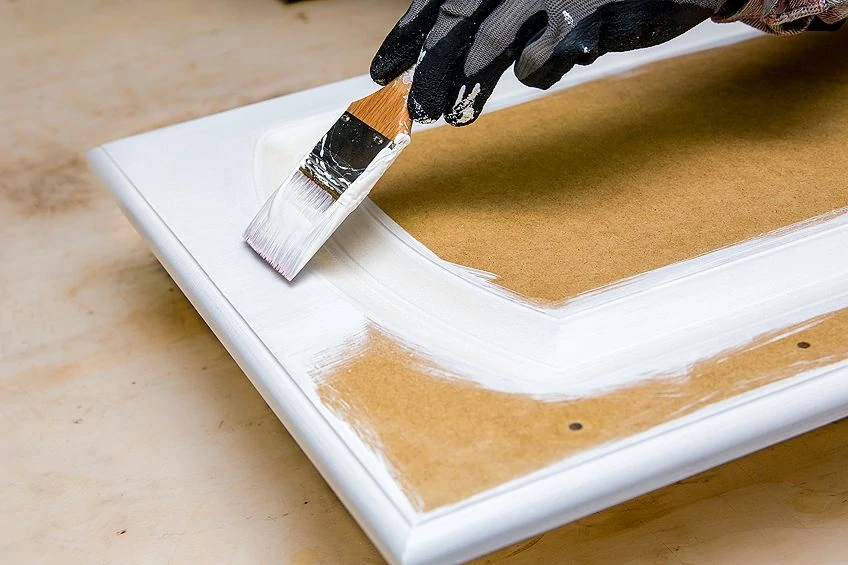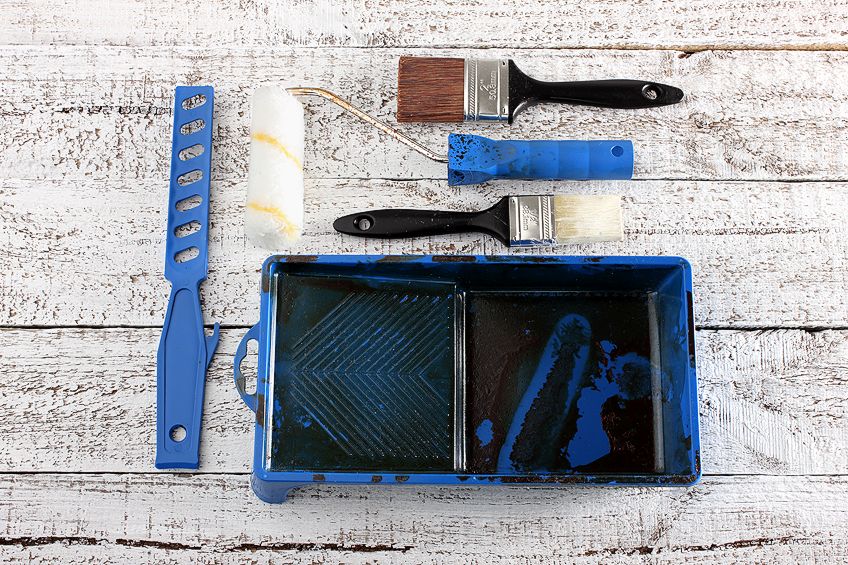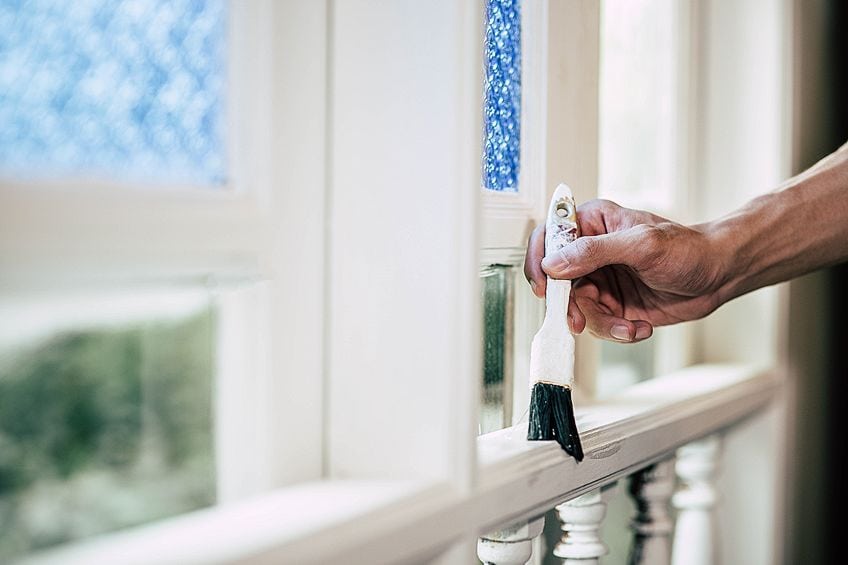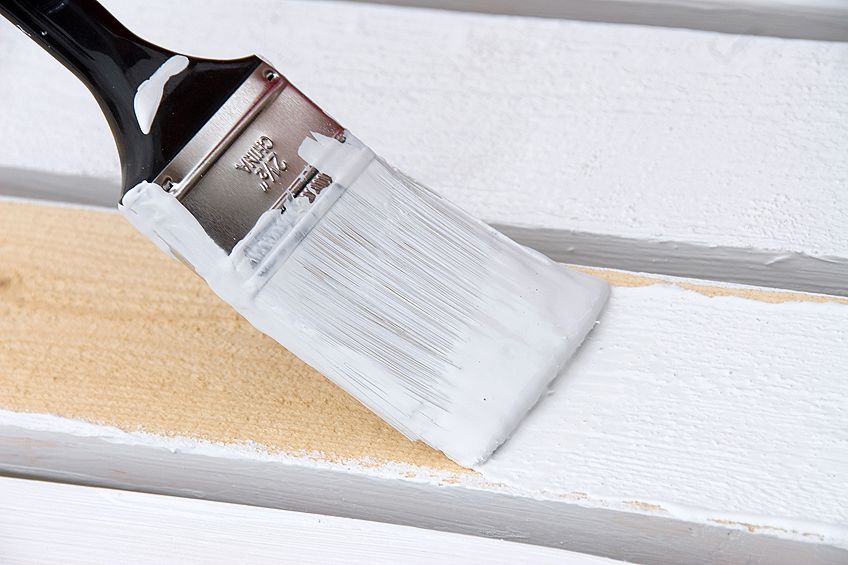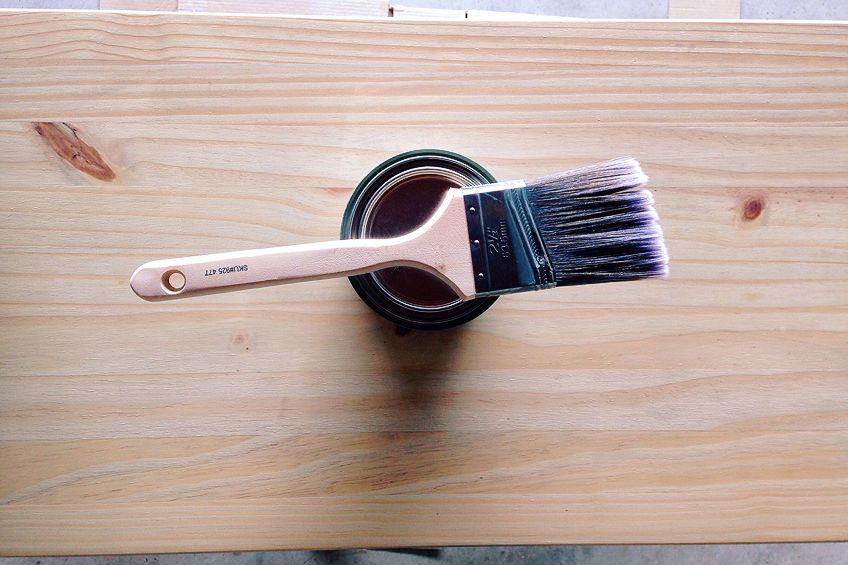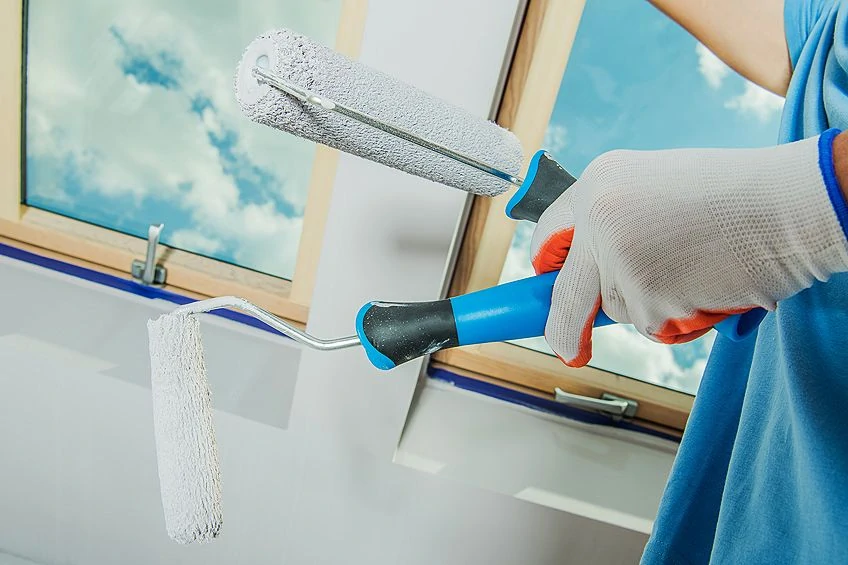How to Paint MDF – A Guide on MDF Painting and Finishing
This post may contain affiliate links. We may earn a small commission from purchases made through them, at no additional cost to you. You help to support resin-expert.com
MDF is the initialism of medium density fiberboard, which is a popular wooden building product that consists of wood fibers broken into small pieces. These are mixed with wax and a resin to bind it, and then all of this is compressed under high pressure and heat processes in order to form a wooden board product. This product is made from wood, but it is not the same as hardwood. MDF is more like plywood, for example, that consists of sheets of wood sealed together to form a wooden board product. Now that we are aware of what the term MDF means, we will discuss more about the product itself, and also show you how to paint MDF wood sheets.
Discovering More About MDF
Medium Density Fiberboard is a wooden board that is often used in making furniture for your home, as well as in the construction business. What makes it so popular is that it is a lot cheaper than solid wooden boards and comes in sheet sizes of four by eight feet, and a thickness ranging from 1/4 to 1-inch sheets. Due to the way that it is constructed, it is a wooden board that has no knots or wood grain like real wood. This makes it a lot easier to cut, making it ideal for use on trimming and carpentry work. The MDF board has a smooth and hard surface, and this makes painting and veneering the surface a lot easier.
All of the above qualities make the MDF board very resilient and strong. Yet, it can still be shaped into various angles, curves, and panels that are ideal for bathrooms and kitchen cupboards. However, just like other pressed woods, it has one major disadvantage: The board will absorb water and moisture, resulting in the board swelling, cracking, or splintering, thus changing its shape and form permanently. Therefore, we very strongly recommend that you avoid using water-based paints, as they will harm the wood board. Just for interest’s sake, you can also get an AKA particleboard (low-density fiberboard), and also an AKA hardboard (high-density fiberboard).
We will now show you how painting MDF fiberboards makes them acceptable for use in the kitchen or bathroom, even though these rooms always have a high moisture content.
Instructions for Painting MDF Fiberboards
Can you paint MDF Fiberboards? Yes, painting MDF Fiberboards gives it that extra protection from any moisture without much need for extensive preparation before you start painting your MDF boards. However, if you want to have long-lasting and exquisite-looking furniture, then you need to take note of a few important aspects. Before you start MDF painting, there are a few concerns that need to be addressed first.
Since the MDF boards can be hazardous when cutting, we suggest that you wear the necessary safety equipment to protect yourself from the dust. Make sure that you wear a dust mask. You will also need to make sure that you have all the necessary equipment and tools that are required before you start MDF painting.
Let us now consider what type of equipment you will need to paint your MDF boards. It will not be necessary to go out and buy any fancy tools or equipment, as all you need can be bought from your local hardware store.
- Coveralls or overalls
- Disposable gloves
- Dust mask
- Safety goggles
- 120-grit sandpaper
- Sanding pads
- Drywall compound
- Tack cloth or old rags
- Suitable MDF primer for a board application
- Good-quality paint brushes
- Paint suitable for MDF board application
- Sealing or finishing paint
The first thing you need to do is protect your work area by laying down some drop cloths or plastic sheeting, which will make it a lot easier to clean up after you have finished. When sanding MDF boards, they produce a lot of fine dust which can irritate your eyes and lungs, so be careful and wear a dust mask and safety goggles.
Sealing the Edges of the MDF Board
It does not matter if the boards have factory edges or are custom routed, they still need to be sealed. This is because they are more porous than the flat surface of the board and will absorb moisture easily. Sealing will ensure that they do not swell or distort when moisture or water comes near them. The sealed edges will also allow the paint to adhere properly, giving the edges the same smooth look as the surface face of the boards. So, what do you use to seal the edges with? You can use a drywall sealer, acrylic paint sealer, or even wood glue.
Using Drywall Sealer to Seal Edges
All you need to do is take a substantial amount of drywall compound and apply it to the edges using your fingers. Then allow it to dry, scrape off the excess, and sand the edges down using 120-grit sandpaper.
While you still have some of the drywall compounds, you can check to see if there are any scratches or marks on the flat surface of the MDF board. Fill the scratches or marks with the drywall compound, otherwise, these scratches and marks will become very obvious once you have finished painting.
Now, you need to take some 120-grit sandpaper and sand down the entire surface of the board, and then wipe it clean with a tack cloth, making sure all the dust has been removed. Ensure that you wear the protective equipment when sanding MDF boards and try to do it in a well-ventilated area.
Using Acrylic Paint Sealer to Seal Edges
Make sure you use an oil-based filling primer or sealer. Any enamel primers will do an excellent job in sealing the edges, but make sure that you apply it thinly, as you do not want the layers to build up and start to drip or run when the paint dries. Try to choose a color that will match the color of your top-coat when applied to the larger surface area. We do suggest that you use a heavy-bodied paint primer or sealer, as just one coat should be enough to seal the edge effectively.
Using PVA Wood Glue for Sealing Edges
You can also apply a thin layer of PVA Glue to seal the edges by using a glue spreader, airbrush, or pump spray bottle, thus ensuring that you do not leave a build-up of glue on the corners. Take care of what type of wood glue you use as most of the PVA glues require you to thin the glue down with water. If you use this type of glue, it will be a disaster as the moisture will immediately cause the fiberboard to swell. There is an acid-neutral PVA glue that has been specially designed for bookbinding and can be applied via a spray bottle, roller, or spreader. Allow the glue to dry properly and then you can sand it down, but be careful not to sand it too much and expose the bare edge.
Priming the MDF Fiberboard
Remember that the MDF Board is very porous, and it will soak up any moisture very quickly. Thus, you need to prepare the surface before you apply the paint. If you apply the wrong primer, then the paint you apply over the primer will not penetrate the board properly, causing the paint to form a skin that will peel off. You will then be left with a horrible-looking finished product.
Never use a latex primer for your MDF Board, as it causes the wood to expand the same way a water-based primer affects the texture of your wood. When applying the primer to your fiberboard, ensure that you use a solvent-based primer and be careful not to use a multi-purpose primer. This is because when they manufacture the MDF Boards, they make use of various adhesives and chemicals that will react to the wrong type of primer. Only use a primer that is suitable to apply on an MDF Fiberboard.
The edges of the board are very porous, so make sure you seal those areas with the primer to protect the board. It is always advisable to apply two or three coats of the primer and then sand the surface very lightly between coats, allowing the primer about an hour to dry before applying the next coat. Make sure you remove all the dust from the board surface before you continue with the next coat of primer.
Another word of advice: Prime both sides of your fiberboard as it is very porous, and the primer can easily bleed through your board. You do not want this to happen, so apply more than one coat of primer to avoid the paint from bleeding through to the other side of the board.
Best Primer for MDF Fiberboards: Zinsser Cover Stain Interior/Exterior Oil Primer Sealer
This Zinsser Cover Stain Primer is ideal for remodeling or new construction work. It is designed with a high-build hiding power formulation that can seal any smoke or water stains. The primer can adhere to almost any exterior or interior surface without prior sanding and is also easy to sand. This MDF Primer can block out nicotine and water stains, prevents redwood and cedar bleeding, hides all dark colors, and seals and penetrates all wood surfaces.
- A top-quality cover stain that will add extra shine to your product
- Formula blocks most stains and helps seal water and smoke stains
- Use on exterior surfaces for full penetration and flexibility on surfaces
This Zinsser Primer is not only great for large construction projects, but is also effective when used on small home projects. When used for exterior surfaces, it penetrates fully and offers flexibility. The product not only comes in a one-quart tin but is also available in a spray can form. The primer dries very quickly within one hour, providing you with a quality enamel primer or undercoating. It will also give your item an extra shiny finish.
PROS
- Dries within one hour
- Seals smoke and water stains
- Blocks out redwood and cedar bleeding
- Excellent interior and exterior wood sealer
- Able to adhere to almost any wood surface without prior sanding
CONS
- May be difficult to apply with a paintbrush due to the primer’s consistency
Painting the MDF Fiberboards
Due to the composition and make-up of MDF boards, you need to take extra care when choosing the best paint for MDF. Oil-based paint is the most common type of paint used, as it is compatible with your solvent-based primer. However, when using oil-based paint, you will also have to use paint thinner to thin the paint and to clean the brushes.
There is a need for caution when using oil-based paints, as they emit strong and toxic chemical vapors, which requires the use of protective equipment and a well-ventilated area to work in.
There are other alternatives besides oil-based paint, which include acrylic paints. Acrylic paint makes use of polymer emulsions in its formulation that carry the pigment, and is also a very fast-drying paint. Some acrylic paints can be thinned using water, but as the MDF boards are threatened by moisture, you need to buy an acrylic paint that is not water-based and does not need to be thinned, but is instead ready to use directly from the tin.
Another alternative to oil-based paint is latex paint, but this is an option that you should consider very carefully as latex paints are water-based. If you have sealed the wood surface as well as the edges properly, then latex paint can be used. However, if there is a spot on the wood edge surface where the primer is not thick enough, or it has not covered the wood properly, then splintering or swelling of your wood can take place. On the other hand, the advantages of using latex paint are its low vapor emissions and smell, as well as its ease of use and quick-drying capabilities.
NOTE: The use of an alternative to oil-based paint like acrylic or latex paint is acceptable, but you need to first ensure that the edges of the MDF board have been properly sealed. We hope this answers the question of whether r not you can you paint MDF boards.
Applying the Base Coat to Your MDF
Now that you have decided on the best paint for MDF to use, let us begin with the painting. At this stage, your MDF board has been properly primed with an oil-based primer, ensuring that all edges are properly sealed. Next, let us start painting the base-coat by first applying a thin layer. If the paint is not drying quickly enough, it is best to stop painting and to sand your wood surface again.
After the first coat of paint has dried properly, you can proceed to the second coat and if necessary, a third coat. Remember to sand the surface down after each coat. When painting a cabinet or shelves that will see a lot of wear and tear, we recommend that you apply a sealer or topcoat, which will protect your paint. However, if you are painting trims that do not see much wear and tear, then there is no need for a topcoat or sealer. When applying your base coat, you can use a roller, brush, or a spray gun – whatever is best suited for your particular project.
Best Base Coat for MDF Fiberboards: INSL-X Cabinet Coat Enamel Semi-Gloss Paint
This product by INSL-X is a supreme semi-gloss enamel paint that is ideal for refurbishing or refinishing bathroom or kitchen cupboards, crown moldings, furniture, shelving, or any other interior application. It will give your cabinets that factory-like finish, which is an ultra-smooth and durable, beautiful finish.
- The ultimate acrylic cabinet paint for a “factory-like” finish
- Super adhesion to hard-to-coat surfaces without primer
- Durable semi-gloss finish resists chips, scuffs, stains, and water
The paint has exceptional adhesion, which allows you to paint on difficult surfaces without applying a primer. This cabinet enamel has outstanding leveling and flow properties and also offers excellent resistance to stains. The paint also provides you with a first-class satin finish that is durable and will make your cupboards just like new for many years. You can easily clean your brushes by using soap and water.
The durable finish is resistant to food stains, chipping, grease, water, and scuffing. The one-gallon paint tin should be able to handle up to 450 square feet. It is recommended that you apply the paint when your surface temperature is more than 50 degrees and less than 90 degrees Fahrenheit. Before you start to paint, it is also advisable to first read the instruction label on the tin, which gives you advice and tips on application and preparation.
PROS
- Provides an ultra-smooth finish
- Ideal when refurbishing old cupboards
- Urethane-acrylic formulation
- Adheres well to all hard-to-reach places without the need of a primer
- Easy to clean
- Low volatile organic compound (VOC) levels
CONS
- May require more coats than suggested
- Fairly expensive
Applying the Sealer or Topcoat to Your MDF
Is a topcoat necessary and where should you apply it? The sealer or topcoat is applied to give protection to your furniture from water rings, scratches, discoloration, or just ordinary plain dirt if subjected to a lot of daily wear and tear. This also makes it a lot easier to keep clean, as the dirt is not able to penetrate the surface – all it needs is a quick wipe-off.
A topcoat is applied to such items as coffee tables, desks, dining room tables, or any other piece of furniture that is used daily. It is also used on furniture that has a dark finish that shows up dust and smudges very easily. Another area where it is of great value is on kitchen and bathroom cabinets, as these items are exposed to a lot of moisture, and the topcoat will protect them.
Is it necessary to paint a topcoat over a latex paint finish? The answer is yes. Even though the latex paint is durable, it will still benefit from a protective layer of paint. Another reason is that clear coats are waterproof, whereas latex paints can form bubbles if any moisture penetrates the surface. When you apply the topcoat, make sure that you apply a thin layer for the first coat and ensure that it is applied evenly. Also, make sure that you apply the topcoat on the edges of your MDF board as well as the other surfaces.
Best Top-Coat for MDF Fiberboards: MINWAX Water-Based Polycrylic Protective Finish
The Minwax Polycrylic Protective Finish is a water-based product and can be applied to any painted or wood surface. The crystal-clear finish makes it an ideal option for use on light woods like birch and maple, and it can also be applied over water-based wood stains. The finish can be applied with a brush, roller, or it can be sprayed on. The product is a lot less toxic than polyurethane paint and is easy to work with, and can be cleaned simply with soap and water. One drawback is that it cannot take high temperatures like polyurethane can.
- Protects and adds beauty to interior wood surfaces
- Ultra fast-drying formula allows for quick recoats in 2 hours
- Low-odor, non-yellowing, and simple water clean-up
This product by Minwax comes in gloss, semi-gloss, satin, matte, and ultra-flat sheens. Its drying time is fast, which means that after just two hours you will be able to apply the next coat. Within three hours, you can handle it, and within 24 hours, you can use it properly. It also has a very low odor and will prevent the paint from yellowing.
PROS
- Dries quickly
- Easy to use
- Easy to clean up with soap and water
- Non-yellowing
- Low odor
- Crystal clear finish MDF
- Ideal for all furniture
CONS
- Cannot tolerate high temperatures
- Does not cure to a hard finish MDF
Frequently Asked Questions
What Is MDF?
MDF is an abbreviation for medium density fiberboard, which is a wood product that has taken wood fibers and wax and pressed them together under extreme heat and pressure, producing a wooden board.
Are There Any Advantages for Using MDF Boards?
Because of the very small wood fibers that form the board, it is very smooth and has no wood grain or wood knots, which makes it ideal for painting. When making furniture, there is no need to worry about matching the wood grain, and the boards are a lot cheaper than other options like plywood.
What Primer Should Be Used on MDF Boards?
Because it is a very porous material, it is not advisable to use a water-based primer, as it will cause the board to swell. So, the best option will be to use a solvent or oil-based primer.
What Paint Should You Use for MDF Boards?
The best option would be an oil-based paint, but other options like acrylic and latex paints can also be used. However, you need to ensure that the edges of the board are properly sealed first.
Can MDF Boards Be Stained to Have the Appearance of Wood?
Yes, you can stain the boards but you will not get that natural, beautiful wood look, because the MDF boards do not have any grain. Also, the wood stain is not absorbed into the MDF like natural wood would do.
Is It Necessary to Apply a Top-Coat to the MDF Board?
A topcoat or sealer provides your furniture with a protective layer, which is very important for your tables, desks, and cupboards that see a lot of wear and tear daily. These items need protection from scratches and marks.


